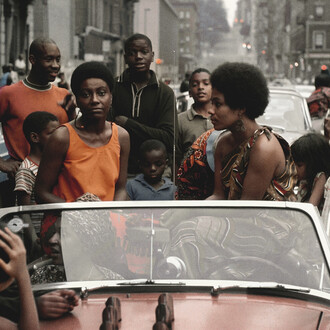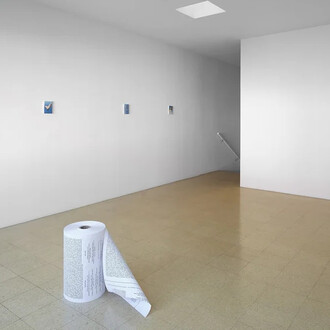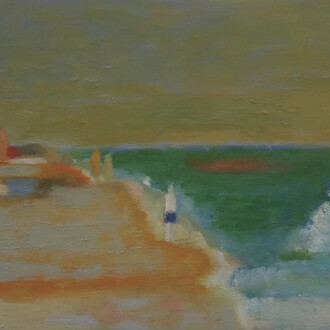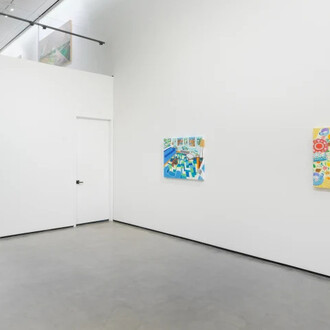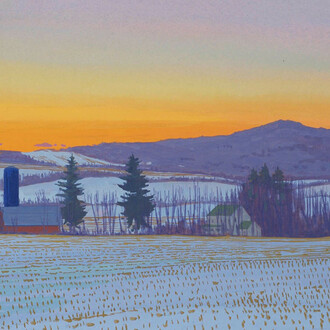Just as modernism concerned itself with the relationship between craft and the emergent technologies of its era, the most pressing condition underlying contemporary culture may be the omnipresence of the internet. Though the terminology with which we describe these phenomena has yet to be widely adopted, this exhibition presents a broad survey of art created with a consciousness of the technological and human networks within which it exists, from conception and production to dissemination and reception. This work, primarily produced by artists living in New York, London, and Berlin, has been controversially defined as “post-internet.”
“Post-internet” refers not to a time “after” the internet, but rather to an internet state of mind—to think in the fashion of the network. From the changing nature of the image to the circulation of cultural objects, from the politics of participation to new understandings of materiality, the interventions presented under this rubric attempt nothing short of the redefinition of art for the age of the internet. As such, much of the work presented here employs the visual rhetoric of advertising, graphic design, stock imagery, corporate branding, visual merchandising, and commercial software tools. The exhibition considers issues related to internet policy, mass clandestine surveillance and data mining, the physicality of the network, theories surrounding posthumanism, radicalized information dispersion, and the open source movement. It looks at changes taking place in the age of the ubiquitous internet, to information dispersion, artwork documentatio n, human language, and approaches to art history.
Perhaps because textual information often assumes a secondary role in the circulation of images today, including the digital milieu of the art world, many of the practices around the post-internet have not yet been sufficiently or critically introduced or interpreted; this exhibition aims to redress this imbalance by allowing for substantive commentary and conversation. Without a framework for contextualizing or identifying post-internet art, one risks grouping such work by voguish aesthetics alone. By contextualizing post-internet art within theory and art history, we hope to elude the inevitable relegation of these new positions to a fading trend. We remain committed to an inter-generational approach, convening work made in the recent past with that created decades prior. Here, unlike other positions claiming an artist’s age endows them with unique, empirical knowledge, this exhibition acknowledges the agency of the artist in teaching us about the ever-changing world, these i ndividuals often acting as consciousness-raising conduits between art and society. This tie to the outside world, and consequent shift against the hermeticism of the art world, is among the most revelatory aspects of post-internet art.
Further, it would be a disservice to the artists in “Art Post-Internet” to not qualify the term “post-internet” as one that is as complicated and deeply insufficient as it is useful, and one that rapidly, and perhaps rightfully, came under fire for its opaqueness and proximity to branding. The curators of “Art Post-Internet” acknowledge that the term to describe this phenomenon could be recast, yet the strength and relevance of such work remains.
“Art Post-Internet” is curated by Karen Archey and Robin Peckham. Participating artists and collectives include Aids-3D, Kari Altmann, Cory Arcangel, Alisa Baremboym, Bernadette Corporation, Dara Birnbaum, Juliette Bonneviot, Nicolas Ceccaldi, Tyler Coburn, Petra Cortright, Simon Denny, Aleksandra Domanović, Harm van den Dorpel, Ed Fornieles, GCC, Calla Henkel and Max Pitegoff, Joel Holmberg, Josh Kline, Oliver Laric, LuckyPDF, Tobias Madison and Emanuel Rossetti, Marlie Mul, Katja Novitskova, Marisa Olson, Jaakko Pallasvuo, Aude Pariset, Seth Price, Jon Rafman, Jon Rafman and Rosa Aiello, Rachel Reupke, Bunny Rogers, Hannah Sawtell, Ben Schumacher, Timur Si-Qin, Hito Steyerl, Artie Vierkant, Lance Wakeling, Andrew Norman Wilson, and Jordan Wolfson. The exhibition is presented in cooperation with the Goethe-Institut China.
Ullens Center for Contemporary Art
798 Art District
No. 4 Jiuxianqiao Lu
Chaoyang District
Beijing 100015 China
Opening hours
Tuesday - Sunday
From 10am to 7pm
Related images
- Harm van den Dorpel, Assemblage (everything vs. anything), 2013
- Aleksandra Domanović, Portrait (soft-touch), 2013
- Aude Pariset, FX Tridacna, 2011-2013
- Alisa Baremboym, Accumulation Pallet, 2013
- Bunny Rogers, Self-Portrait (Cat Urn), 2013
- Aude Pariset, Learning from Development (A Creative Guide to Exploring Your Life Self-Reflection Using Photography), 2012









